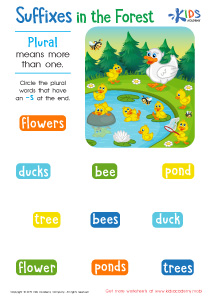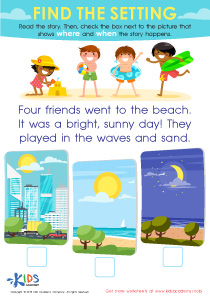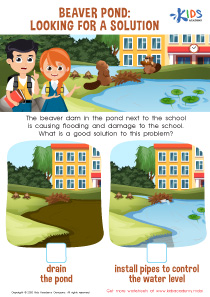Comparing quantities Easy Worksheets for Ages 6-8
3 filtered results
-
From - To
Introduce young learners to the concept of comparing quantities with our easy and engaging worksheets designed for ages 6-8. These printable activities help strengthen foundational math skills by teaching kids how to compare using terms like more than, less than, and equal to. Each worksheet is carefully crafted to make learning intuitive and fun, featuring colorful illustrations and relatable scenarios. Perfect for classroom use or extra practice at home, these worksheets cater to different learning styles and paces, ensuring every child builds confidence in their math abilities. Start enhancing your child's understanding of quantities today with Kids Academy!
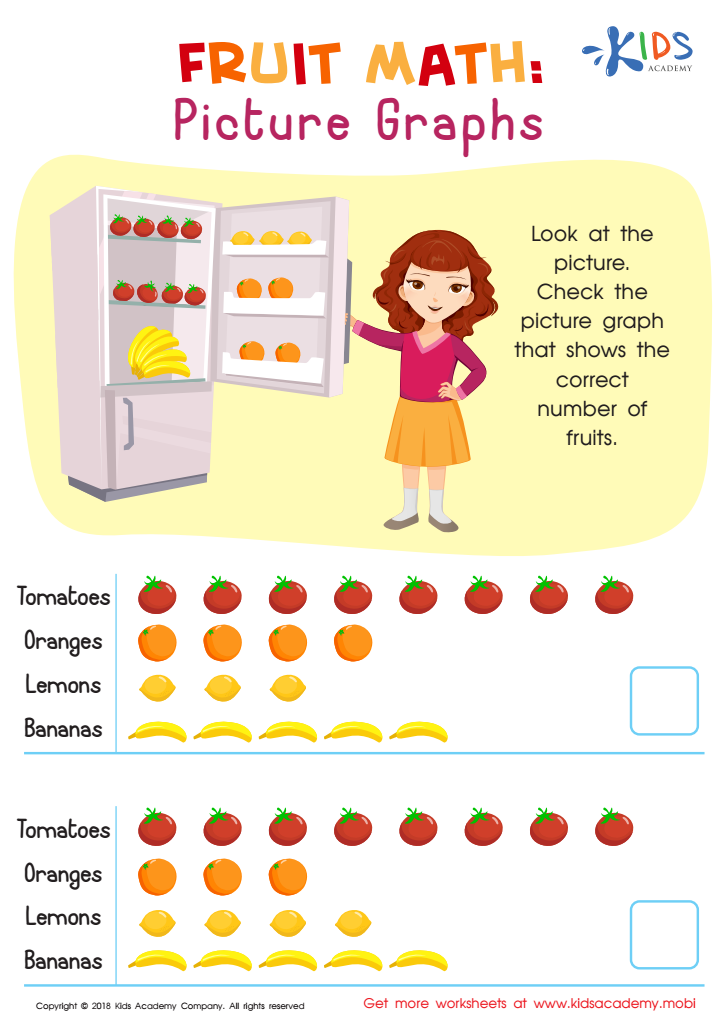

Fruit Math: Picture Graphs Worksheet
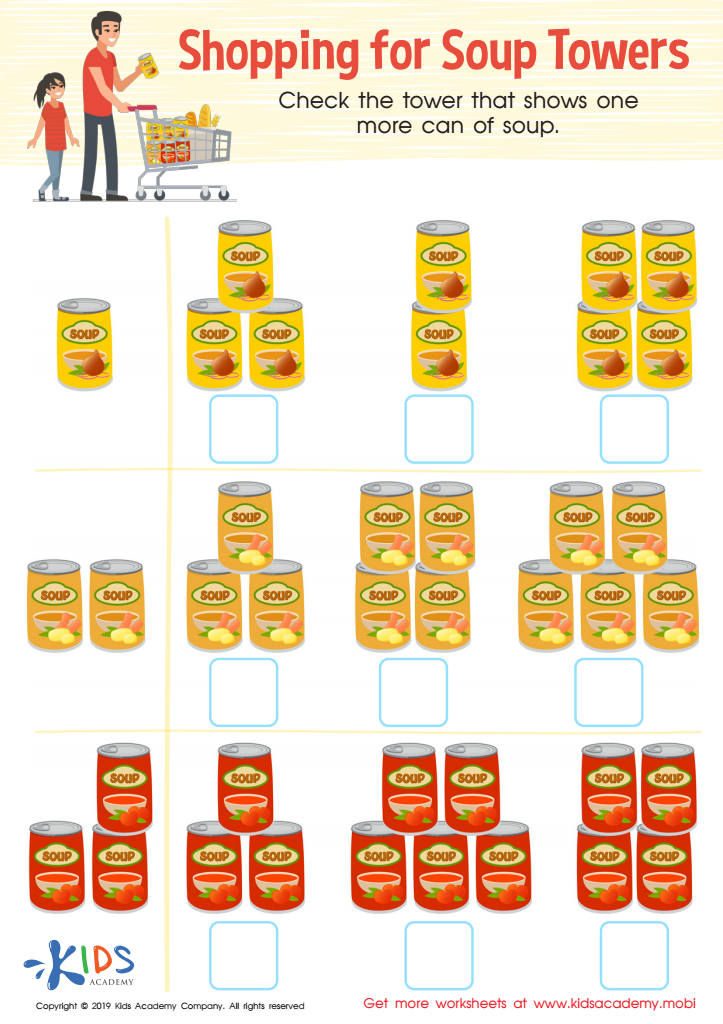

Soup Towers Worksheet
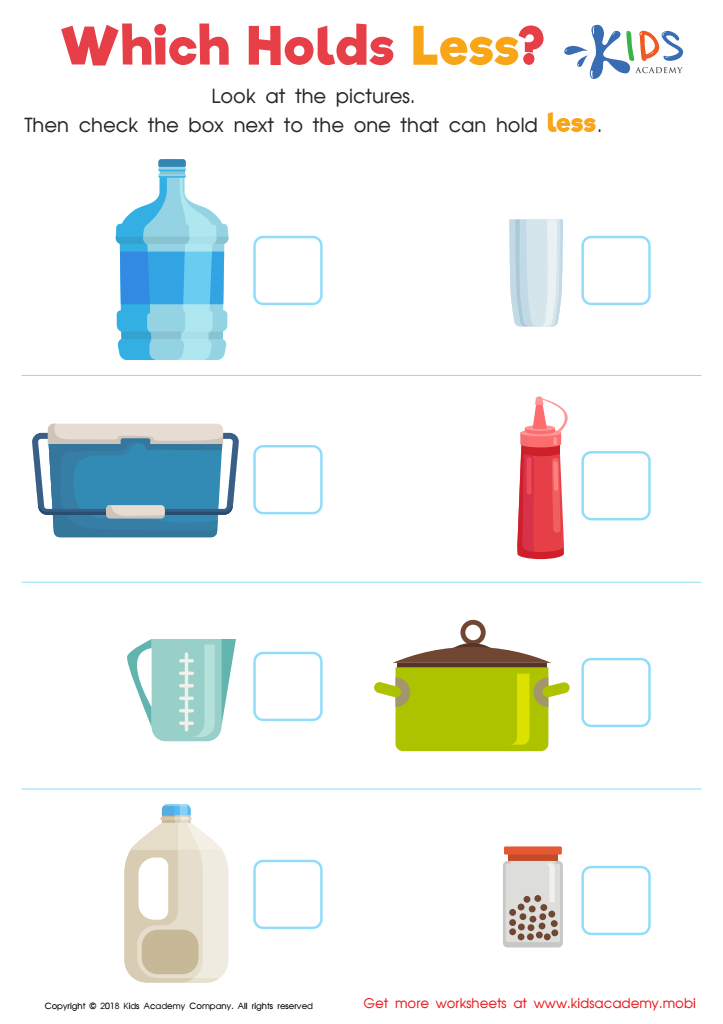

Which Holds Less? Worksheet
Comparing quantities is a foundational mathematical skill critical for children aged 6-8, and parents and teachers should recognize its importance for several reasons. Firstly, comparing quantities helps young learners understand the concepts of "more than," "less than," and "equal to," which are essential for everyday decision-making and problem-solving. These concepts, introduced through comparing quantities, are foundational not only for mathematics but also for understanding dimensions, weights, and volumes in real-world contexts.
Secondly, enhancing the ability to compare quantities fosters number sense, enabling children to develop a deeper intuitive understanding of numbers, scales, and measurements. This skill is crucial for future mathematical learning, including addition, subtraction, multiplication, and division, since it strengthens their ability to grasp numerical relationships.
Furthermore, comparing quantities nurtures critical thinking and analytical skills. Young learners gain confidence in assessing different scenarios, identifying relationships, and making judgments based on quantitative information. For example, comparing apples at the grocery store by count or mass teaches practical applications of these skills.
Finally, comparing quantities develops attention to detail and accuracy. Understanding how to evaluate and juxtapose different sets boosts cognitive abilities and prepares children for more complex mathematical tasks. By emphasizing these skills early, educators and parents lay a solid foundation for lifelong numerical competence and academic success.
 Assign to My Students
Assign to My Students




.jpg)







